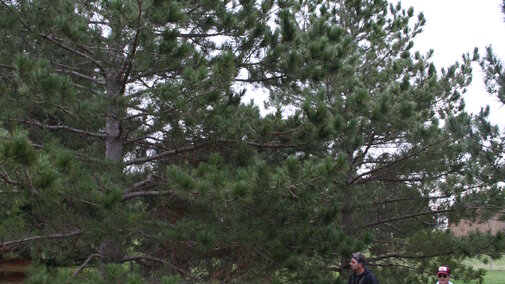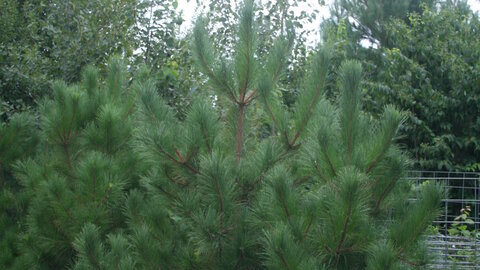Pinus resinosa
,
Coniferous
Origin:
Northeast US, upper Midwest
Red pine is a medium-sized evergreen native from eastern Canada south to Minnesota and east to New York. It is typically found on hills,
slopes, ridges and plains, often in sandy soils. It is sometimes planted in Nebraska.

Where To Grow
Red pine grows best in average, medium moisture, well-drained sandy loams in full sun. It has very little tolerance for shade and
prefers geographic locations with cool summers and cold winters. Tolerates a wide variety of soils but considered somewhat intolerant
of urban pollution. The tree is not common in Nebraska but is worth considering for landscape plantings and in windbreaks and screens.
Suitable to plant west of the 100th meridian.
Size at Maturity
Tree Height
Tree Spread
40-60'
30-40'
Wildlife Benefits
As with most pines, a variety of birds, mammals, and other animals utilize the tree's seeds for food and the tree itself for cover.
Utilization
Red pine has been commercially used for pulpwood and structural timber.
Additional Considerations
In cooler climates, healthy, well-maintained trees usually have few major problems. However, the tree can struggle in the heat and
humidity of Nebraska, especially the southern tier where needle cast, needle blight, and rusts may occur. Insect pests on stressed trees
include sawflies, pine beetles, pine gall weevil, tussock moth and pine needle miner.
Interesting Facts
The scientific name refers to a resinous pitch that is frequently encountered on the tree. Red Pine is the state tree of Minnesota.


